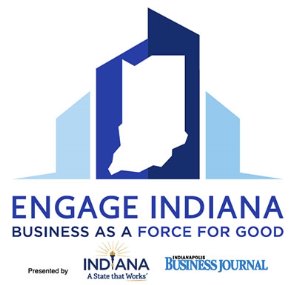The Indiana Chamber Foundation has been making a difference for Indiana employers and beyond for more than 30 years. In addition to the Chamber’s Indiana Vision 2025 initiative, the Foundation’s studies, surveys and programs provide the information and resources to enhance the state’s business and workplace climates.
Marci Price brings her talents and experience to the Foundation as the new executive director. Get to know Marci in this brief Q&A:
 Tell us a little about your background.
Tell us a little about your background.
“I have been a development professional for the past 15 years, focusing on individual, corporate and foundation philanthropy for regional and national organizations. After earning my master’s degree in nonprofit management from IUPUI, I lived in Chicago for several years.
“My husband and I then decided to settle down in Indianapolis to be closer to family. I have since fallen in love with Indiana and have built strong relationships with so many incredible people here.”
What was one of your favorite previous jobs and why?
“One of my favorite positions was at Feeding America, where I developed partnerships with private foundations to support national hunger relief efforts. I truly enjoyed dedicating my talents to improve food security for vulnerable populations throughout the country. It’s an area of great passion for me, and I continue that service as a volunteer for Gleaners Food Bank.”
What attracted you to join the Indiana Chamber team to lead the Foundation efforts?
“Having worked for higher education and human services organizations for several years, I have become acutely aware of the role that research plays in informing solutions to broad societal problems, as well as the role that good public policy plays in developing and sustaining those solutions.
“The Indiana Chamber Foundation has a great reputation for securing research that has led to impactful change through Indiana Vision 2025, and I’m excited to dedicate my time and effort in a way that will support continued economic growth for Indiana’s future.”
What’s one of the most important skills in your role?
“One of the keys in my role is the ability to listen and communicate with diverse audiences. The best partnerships are built on trust and a shared vision for what is possible.”
What do you like to do when you’re not working?
“I try to spend as much time as possible with my husband and two young children. I love exercise and do my best thinking on long runs. I also enjoy going out with friends and listening to live music.”
If you could have dinner and conversation with any one person, who would it be and why?
“I would love to have a chance to have dinner with Michelle Obama. She is such a captivating and strong female leader, who leveraged her challenging position to inspire people to action. It would be a true honor to spend time with and to learn from her.”

 One alarming trend: Despite receiving financial aid, roughly 4,000 seniors who have good grades may quit school because of small outstanding scholastic debt. The sums are often less than $1,000 – but in many cases, such balances make them unable to register for their next batch of classes.
One alarming trend: Despite receiving financial aid, roughly 4,000 seniors who have good grades may quit school because of small outstanding scholastic debt. The sums are often less than $1,000 – but in many cases, such balances make them unable to register for their next batch of classes. Our BizVoice magazine has highlighted corporate social responsibility throughout 2016. Here are some of those articles to date:
Our BizVoice magazine has highlighted corporate social responsibility throughout 2016. Here are some of those articles to date:
 It’s always a pleasure to see our members giving back to their communities. As we’ve documented
It’s always a pleasure to see our members giving back to their communities. As we’ve documented  One of the most exciting developments in American commerce that I’ve seen recently (although it’s been prevalent for years) is the emergence of cause marketing. To me, it truly reflects the greatest potential of our economic system and illustrates a heightened level of corporate responsibility, as well. It’s amazing what can be done when free enterprise and benevolence meet.
One of the most exciting developments in American commerce that I’ve seen recently (although it’s been prevalent for years) is the emergence of cause marketing. To me, it truly reflects the greatest potential of our economic system and illustrates a heightened level of corporate responsibility, as well. It’s amazing what can be done when free enterprise and benevolence meet.